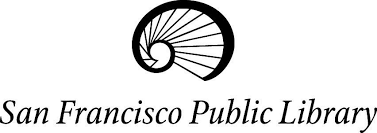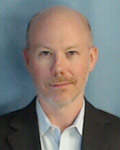
 What are the optimum hours for each of San Francisco Public Library’s locations to be open?
What are the optimum hours for each of San Francisco Public Library’s locations to be open?
San Francisco Public Library (SFPL) is using data to assess the library’s open hours and to take action based upon what they learn. Randle McClure, Chief Analytics Officer for the San Francisco Public Library, recently shared details about their study.
Q. Why did you decide to study library open hours?
A. SFPL is primarily funded through a voter-initiated proposition called the Library Preservation Fund that requires us to perform a comprehensive assessment of our open hours every five years. The organization last performed that analysis in 2013 so it was due for another assessment this summer. We currently offer 1,460 hours of service per week across a system of 28 facilities – which is 21% above our required minimum.
Q. Who conducted the assessment? Was it a team? Library staff? External consultants?
A. All of the above! SFPL hired public sector consultants from the SF City Performance unit as well as an expert survey consultant to perform data collection and analysis as well as manage the public engagement process. Once their reports were complete, SFPL staff then performed further analysis to consider operational effectiveness and determine a set of viable options to propose to our Library Commission. Our preferred option of adding two hours of service per week at the Main Library as well as reallocating 18 hours of service in 11 of our branch libraries was unanimously approved by the commission on May 31, 2018. Those changes are expected to be fully implemented in January 2019.
Q. Can you describe the assessment? 
A. We tracked visitor traffic by hour of service at all of our facilities during 12 two-week intervals from 2014-16 to account for seasonality, in addition to examining hourly computer usage data in 2017. Our survey consultant performed an intercept survey focused on preferred open hours with over 4,500 SFPL patrons in August/September 2017, and SFPL also held 11 public meetings in October/November 2017 so that members of the community could provide feedback on the specific needs of their branches. All of that information was then carefully examined by SFPL staff to determine a number of reallocation and expansion scenarios that would provide the most value for our patrons without needing to increase overall staffing capacity.
Q. What did you learn?
A. We learned that SFPL is already meeting the needs of its patrons very well, with 75% reporting that they are satisfied with the current hours of service. We also learned that there is always opportunity for improvement, as indicated by a number of our late-evening hours at some branches having very low traffic patterns, and some branches exhibiting latent demand (i.e., pent-up demand for service) at other times of the week.
Q. How have/will you use what you learned?
A. As noted previously, SFPL staff weighed the quantitative and qualitative data against operational considerations and constraints to develop a set of reallocation and expansion options for the Library Commission. As we move into the next five-year window, we plan on utilizing new people counter technology that will allow data collection, tracking and analysis of visitor traffic to be much more streamlined, closer to real-time, and actionable.
Q. How have/will you share what you learned?
A. Staff have been engaged throughout the process so they are aware and had input into the changes to open hours that will take place in early 2019. On the public side, there will be a marketing campaign focused on the impacted branches as well as the Main Library in Fall 2018, well in advance of new schedules going into effect.
Q. How will you evaluate the impact of any changes in open hours?
A. New people counter technology across the entire system will better allow SFPL to track and analyze visitor traffic in real time. We can test traffic patterns both within affected branches as well as possible impacts to other branches to determine whether projected improvements in traffic are occurring.
Q. Will you conduct an Open Hours Assessment in the future? If so, when? And will you do anything differently?
A. SFPL is required to perform the assessment at least once every five years, but there is no prohibition against doing it (or adjusting open hours) more frequently. If staffing capacity increases at some future point, we may choose to use the new technology to revisit the data and determine where those needs may lie.
Q. Any advice for other libraries who want to assess and optimize their open hours?
A. We suggest being thoughtful and careful to balance both the qualitative feedback from the community and associated stakeholders with the quantitative data that your visitor traffic patterns exhibit. Community members may assign different definitions to words like “morning” or “evening” which can correspondingly impact perceptions. They also will never know the nuances of the organization’s existing open hours to the same extent that staff will. So, while all viewpoints are important, we encourage other systems to strike a balance between general themes of patron feedback and what the overall data patterns show.
Interested in learning more about the study? See an Open Hours Staff Recommendations presentation delivered to the Library Commission in May: https://bit.ly/2K3AzgQ
 Randle McClure has been the Chief Analytics Officer for the San Francisco Public Library since 2017. Prior to joining the library staff, he spent 12 years working in public sector consulting for the City Performance unit of the San Francisco Controller’s Office. When he’s not analyzing data, he enjoys riding bikes and reading library books with his two-year old daughter, Julianna.
Randle McClure has been the Chief Analytics Officer for the San Francisco Public Library since 2017. Prior to joining the library staff, he spent 12 years working in public sector consulting for the City Performance unit of the San Francisco Controller’s Office. When he’s not analyzing data, he enjoys riding bikes and reading library books with his two-year old daughter, Julianna.
Download a PDF version of this case study here (PDF format).
This case study is part of Data Informed Public Libraries (DIPL), an initiative sponsored by the California State Library and implemented by Infopeople. DIPL is supported in part by the U.S. Institute of Museum and Library Services under the provisions of the Library Services and Technology Act.


